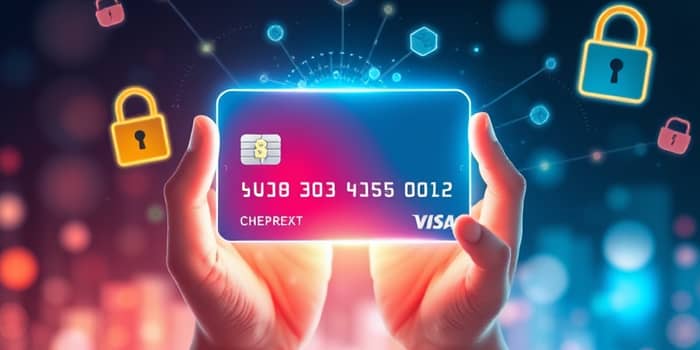
As digital commerce expands, protecting personal and financial data becomes paramount. Virtual cards have surged in popularity, offering a seamless layer of defense against fraud and unauthorized charges. By generating a distinct card number for each purchase, consumers and businesses can shop with confidence and greater control.
Virtual cards function as ephemeral stand-ins for your physical credit or debit card. Instead of sharing your actual card number at checkout, you employ a one-time or merchant-specific number that can be deactivated at any time. This approach delivers eliminate risk to the primary card and ensures that even if data is compromised, your real account remains shielded.
According to recent surveys, 78% of consumers report feeling more secure when using virtual cards. In fact, fraud rates for virtual card transactions are under 0.01%, compared to significantly higher rates on traditional cards. As global adoption climbs—projected to grow by 300% over the next five years—understanding these advantages is critical for anyone engaged in online purchases.
Virtual cards incorporate multiple layers of protection that address common vulnerabilities in e-commerce:
When a merchant experiences a data breach, only the single-use card data could be compromised—and that card can be canceled without affecting ongoing expenses. This lower chargeback rates further benefit merchants, with some reporting a 40% decrease in fraudulent disputes.
Privacy is a growing concern for online shoppers. Virtual cards mask your real account details, ensuring merchants never see the true card number. At the same time, users gain powerful controls to manage spending and budgets more effectively.
Instant issuance means you no longer wait for plastic to arrive. Within seconds of approval, a virtual card is available for immediate use, adding both speed and security to your online experience.
Organizations are increasingly deploying virtual cards to streamline procurement, manage cash flow, and tighten expense controls. By issuing cards to individual teams or vendors, finance departments achieve unprecedented visibility into spending streams.
With over 60% of businesses planning to adopt virtual cards for B2B payments, the shift reflects a desire for more efficient and secure financial operations.
While virtual cards offer numerous benefits, certain factors may affect adoption. Not all merchants accept virtual numbers, particularly those that require a physical card at delivery, such as hotel check-ins or car rentals. Compatibility varies by issuer, so confirm that your bank or card provider supports the service.
Moreover, understanding the user interface of different digital wallets and banking apps is crucial. Some platforms may impose restrictions on how cards can be generated or managed, so take time to explore available features and ensure they align with your needs.
As ecommerce evolves, so too must our approach to payment security. Virtual cards deliver a powerful solution for nearly eliminate all fraud risk and enhance financial privacy. By adopting this technology, shoppers and businesses alike can enjoy peace of mind, streamlined expense management, and a stronger defense against data breaches.
Whether you’re a frequent online shopper, a subscription service aficionado, or a finance professional overseeing corporate expenditures, virtual cards represent a modern, flexible, and secure payment solution. Embrace the future of safer shopping today and transform the way you manage your digital payments.
References













